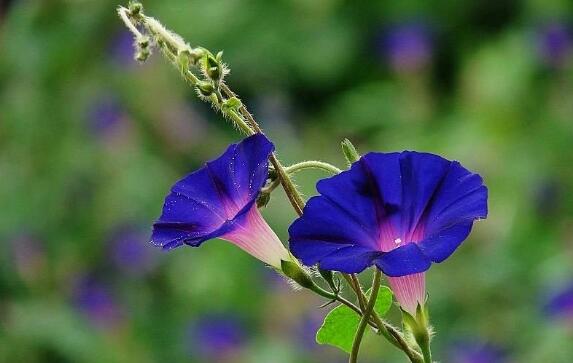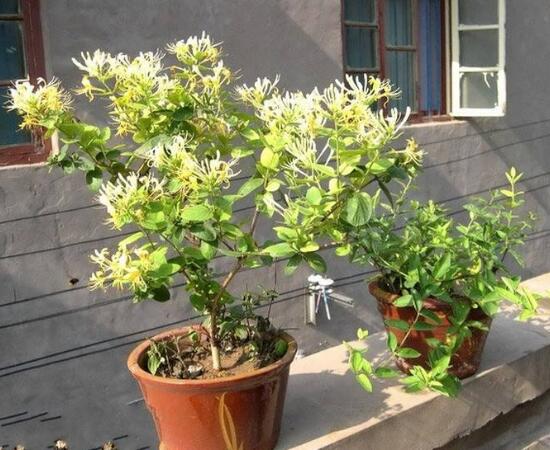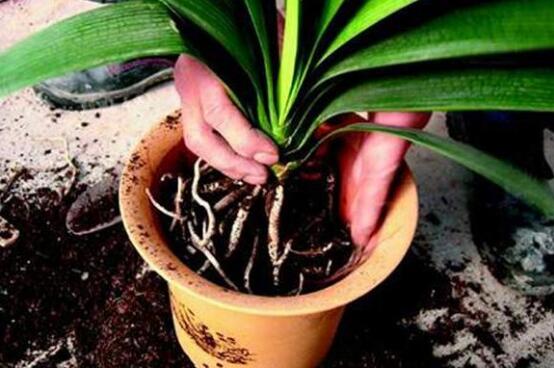Morning glory how to reproduce, morning glory cuttage propagation methods detailed explanation / selection of healthy branches
Morning glory, also known as trumpet flower, although very common, but after years of breeding experts, has crossed out many varieties, the color has become diverse. Does it feel monotonous to raise a pot of morning glory at home? You might as well breed a few more pots, and the scene in full bloom will look good. How do you reproduce morning glory? Cuttings are used the most in daily life, so let's take a look at the cutting propagation methods of morning glory.
First, how to propagate morning glory, cuttage / sowing

The beauty of morning glory is mainly reflected in flowering, which is shaped like a trumpet, brightly colored, and looks cute. If multiple pots open together, then the beauty will not be mentioned. However, in order to achieve the goal, we need to master the breeding method of morning glory, of course, you can also buy it directly. It is understood that the propagation methods of morning glory mainly include cutting and sowing. The specific methods are as follows:
(1) cutting propagation of morning glory.
① cutting time, spring and autumn
If you want to have a high survival rate in the reproduction of morning glory, the choice of time is very important. Generally speaking, it is best to choose in spring and autumn, the survival rate of cuttage is high in early spring and autumn, and low in high temperature season in midsummer, so it should be avoided.
② cuttings selection
It can be said that the quality of cuttings directly determines the success rate of morning glory cuttage propagation. When flower friends collect cuttings, it is best to do them before the sun comes out in the early morning, when the water content of the branches is high, which is conducive to the rooting of cuttings.
When collecting cuttings, there is also a way. Flower friends can cut strong and pest-free branches from the base of the node, about 10 centimeters, and the cut should be flat. Leave 2 to 3 leaves at the top of the cuttings, half of which can be cut off if the leaves are too large.
③ basin soil selection
After the time and cuttings are selected, the potted soil of cutting is also very important. Morning glory cutting propagation is more ideal is coarse sand, perlite and other coarse structure of basin soil, because this water permeability is good, conducive to rooting, of course, other basin soil can also. In addition, the cuttage flowerpot should not be too large, with a diameter of 15 to 20 cm.
④ cuttage start
After the above preparations, the cutting propagation of morning glory can be officially started. At this time, the flower friends directly insert the cuttings into the prepared flowerpot, with a depth of 2 to 3 centimeters, a plant spacing of 6 centimeters, and a row spacing of 4 to 6 centimeters, so that the leaves stretch naturally. If the cutting time is different, the maintenance method is also different:
Cuttage in greenhouse in early spring: it should be placed in a place with scattered light. Keep the temperature from 18 ℃ to 20 ℃, light time not less than 12 hours, and take root in about 15 days.
Outdoor cutting in autumn: pay attention to shade, preferably covered with film. Made of 1 meter wide, length according to the number of cuttings, 0.5 meters high arch shed protection. Morning glory can be moved to greenhouse for maintenance after rooting in the field.
⑤ cuttage ends and takes root in 2 weeks.
At this time, the cutting propagation of morning glory has been over, waiting for whether it is alive in the end. Generally speaking, it can take root in about 2 weeks. If there are conditions, breed a few more pots, and then you can enjoy a group of morning glory.
(2) sowing and propagation of morning glory.
How to reproduce morning glory, in addition to the cutting propagation introduced above, there is also sowing propagation. Operation method: it can be broadcast in the open field in late April, or sowed in the greenhouse in March, the suitable temperature is 25 ℃, germination in 1-2 weeks. The cultivation and management is simple, and the shelf can be set up when planting in the open field, so that it can climb on the shelf, and the seed ripening period is inconsistent, so pay attention to timely harvest.
Morning glory has strong vitality, as long as it is operated properly, the survival rate of reproduction can be said to be very high. In the breeding method of morning glory, we talked about its requirements for light, temperature, watering and so on, so if you want morning glory to blossom into beautiful flowers, flower friends still have to learn a lot about the cutting propagation methods of morning glory. I hope I can help you.
A detailed explanation of the planting method of Petunia (Dwarf)
Morning glory and petunia are two different families and genera. Morning glory, Petunia, Petunia. Annual climbing flowers. Petunia, Solanaceae, Bidong eggplant. Perennial herbs.
1. Sowing: because the seeds of petunia are fine, there is no need to cover the soil for sowing. Sow the seeds on the surface of the fine soil and spray water (do not water directly so as not to wash the seeds deep into the soil) so that they can germinate. The optimum temperature for seed germination of petunia is 15-20 degrees. The temperature below 10 degrees generally cannot germinate, and the absence of sunshine indoors also affects germination. The temperature is too low and it is not easy to germinate or grow slowly after germination. It is easy to rot buds if the temperature is too high.
Seeds can be sown all year round in southern Guangdong. I broadcast it about every 2-3 months, because it keeps the flowers blooming all year round. I am still "euthanized" for senescent plants even if they bloom again. In order to keep the balcony potted flowers ornamental. The substrate I use for sowing and planting is sandy soil mixed with commercially available cultivated soil (1:1). Use spray water supply to keep the soil moist, but not too wet, otherwise the seeds will not germinate in the deep layer, depending on the weather and temperature, they can germinate 5-10 days after sowing.
2. When the seedling has 4-5 true leaves, it can be transplanted to a large basin. Use 20cm caliber flowerpots, one for each pot. The big basin also uses the above-mentioned soil, but adds granular organic fertilizer and compound fertilizer as base fertilizer. Do not directly bask in the sun in the first few days after transplantation and put it in a ventilated and shaded place. The seedlings will grow new leaves in a few days. Under the condition of suitable temperature (15-25 degrees), you can grow up in a month.
3. The seedlings of petunia are very weak. The water should not get too wet, or it will rot easily, especially if it is too cold or too hot. Petunia like dry and afraid of wet, in the growth process, need enough water, but not too much watering. Do not water too much at the seedling stage to make its roots developed. In this way, the plant branches are very exuberant.
4. At the initial stage of planting, the soil should be fully fertilized. In the past, there was too much watering in the seedling stage, which led to rotten roots. After pulling up the plants, it was found that the roots were very underdeveloped. It is good to adopt the method of preferring dry to waterlogging.
5. Thin nitrogen fertilizer can be applied at this time. I usually use compound foliar fertilizer and urea to dilute and spray foliar. The base fertilizer I use is organic mixed fertilizer (produced in Shenzhen), which contains chicken shit, bone meal, bean dregs and so on. Each basin uses about 20-30 grams (estimated). I use less inorganic mixed fertilizer. The yellowing of the leaves is due to lack of fertilizer. To apply thin nitrogen fertilizer (urea, etc.), it is best to spray the leaves.
6. when the stamens appear, do not apply nitrogen fertilizer, but use potassium dihydrogen phosphate solution to spray the foliage. In this way, the plant will not grow only, and there will be many stamens. After petunia blossoms, I spray a mixture of potassium dihydrogen phosphate and organic amino acid liquid fertilizer on the leaves every 7-10 days. It is found that it has an obvious effect on prolonging the florescence and increasing the freshness of flowers. You can try. If the concentration of the liquid is not too high, it will have no effect even if it is sprayed on the flowers. The concentration of my spray was less than 0.1%, and I didn't find any effect on the flowers.
7. About picking the heart. As long as the application of water and fertilizer is controlled at the seedling stage, the plant will branch naturally and there is no need to pick the heart. The petunia I planted didn't pick the heart. If the plant growth is uneven (for example, one branch grows very fast, other branches grow slowly), you can also control and adjust the plant type by coring.
Article source
8. Moisture: petunia should not be watered too wet during the growth process. Too wet is not good for root growth, and it is more likely to rot in summer. Its root regeneration ability is poor. Once the rotten roots are hard to get back. So you can't water too much, especially in summer. The permeability of the soil is better. In this way, the plants will flourish.
9. Petunia has fewer diseases. The main pest is whitefly. Drugs such as deltamethrin or fenitrothion can be used for prevention and control. If it is not controlled in time, the larvae will suck up the leaves and die in serious cases. Add: I used a lot of medicine before, but it didn't work very well. One batch was killed and the other grew back. After using imidacloprid (Imidacloprid) wettable powder, the effect is very good. Now the whitefly is extinct.
Double petunia is difficult to seed and needs to be propagated by cuttings. Methods: in spring or autumn (summer and winter cuttings were difficult to survive), about 7-8CM of sturdy branches were cut into sandy soil or culture soil, and the insertion depth was about 2-3CM. Keep the soil moist and take root in about 20 to 30 days. It can be transplanted to the big basin in about 45 days. The water permeability of the key soil is better.
Petunia can bear seeds, but double petal dwarfs are difficult to seed, and artificial pollination can produce many seeds when the flowers are in full bloom. The seed is in the core of the withered flower. Can be picked after maturity, not difficult, full shell, there are dozens of seeds, the lower right corner of the brown can be picked, if not picked seeds will crack in the flowerpot, almost every flowerpot sent out a lot of dwarf seedlings, often to be picked. It will crack too late, and the small seeds will be scattered into the flowerpot. The root system of petunia grows slowly. If the viscosity of the soil is too high, it is disadvantageous to root development and affects plant growth. If your soil viscosity is not big, it is OK, if the viscosity is too big, it is best to add young sand to increase the soil permeability. Petunia grow slowly and their flowers become smaller in summer (the temperature is above 30 degrees).
In summer, if you want to get Petunia through the heat, it is recommended that you do not let the sun stay in the sun for a long time. Don't be afraid that it is thirsty and pour more water, it will be counterproductive and easy to rot the roots. In my experience, it is best to water only once a day, and not too much. It is appropriate to water it after the temperature drops in the evening. Because if it is watered in the morning, the temperature will rise soon, which will hurt the root system and easily rot and die. When the branches and leaves wilt and the soil surface is still wet, the root system may have been damaged.
If you continue to increase the amount of water by mistaking it for underwatering at this time, it will accelerate the death of the plant. At this time, you can put the plant in a ventilated and shady place and make water completely for 2-3 days. Wait until the soil is completely dry before watering a small amount, once every 1-2 days, the amount of water should be less rather than more. In this way, some of them may be saved. Petunias have fewer flowers in summer, and the flowers are smaller and not bright enough, but if you can survive the hot summer season through your careful care, your petunias will bloom luxuriantly and brightly when others start to sow in autumn, and will last until next spring.
Article source
- Prev

How to reproduce potted honeysuckle, diagram of cutting propagation method of honeysuckle / 100% survival
Speaking of honeysuckle, I believe we are no stranger, honeysuckle's unique fragrance is loved by people. In nature, any plant has a method of reproduction, and honeysuckle is no exception. How do honeysuckle reproduce? There are many propagation methods of honeysuckle, the most common of which are cutting, sowing, striping propagation and so on.
- Next

How does the orchid reproduce? it blossoms for 3 years / sows and blossoms for 5 years
Gentleman, 6% beauty in leaves, 4% beauty in flowers, is a highly ornamental indoor culture plant, deeply loved by flower friends. In life, many flower friends know how to raise orchids, but do not know how to breed them, which actually reduces the fun of growing flowers. It is better to buy flowers than to breed yourself.
Related
- Fuxing push coffee new agricultural production and marketing class: lack of small-scale processing plants
- Jujube rice field leisure farm deep ploughing Yilan for five years to create a space for organic food and play
- Nongyu Farm-A trial of organic papaya for brave women with advanced technology
- Four points for attention in the prevention and control of diseases and insect pests of edible fungi
- How to add nutrient solution to Edible Fungi
- Is there any good way to control edible fungus mites?
- Open Inoculation Technology of Edible Fungi
- Is there any clever way to use fertilizer for edible fungus in winter?
- What agents are used to kill the pathogens of edible fungi in the mushroom shed?
- Rapid drying of Edible Fungi

